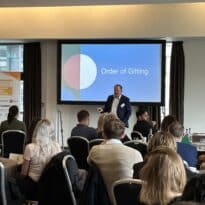UK inflation came in higher than expected in April, dampening hopes of a June interest rate cut.
Figures from the Office for National Statistics revealed that the Consumer Prices Index rose by 2.3% in the 12 months to April, down from 3.2% in the 12 months to March but higher than the 2.1% analysts had forecast.
Falling gas and electricity prices resulted in the largest downward contributions to the monthly change, helping to partially offset rises in motor fuels.
Electricity and gas prices fell by 27.1% over the last year, the biggest drop on record, as a result of the Ofgem energy price cap. Gas prices fell by 37.5% on the year, while electricity prices fell by 21%.
Tom Stevenson, investment director at Fidelity International, said the figures would be welcomed, with inflation nearly reaching the Bank of England’s 2% target.
“As expected, the main reason for the rapid drop in inflation from the previous month’s 3.2% was falling energy costs on the back of Ofgem’s 12% reduction in the household bills cap. That’s good news because it means the only reason for interest rates to remain at today’s restrictive level of 5.25% would be if the Bank fears that persistent wage inflation will push inflation back up again later in the year.”
Lindsay James, investment strategist at Quilter Investors, said: “The fact the headline rate begins with a two is incredibly symbolic given the events since the pandemic and the fact inflation was over 11% less than two years ago. Investors will not want the Bank of England to be as cautious on the way down with rates as they were on the way up, when inflation was spiking, and this simply ratchets up the pressure come its next meeting in June.
“The Bank of England will be incredibly cautious of further inflationary spikes, particularly given UK wage growth is running at 6%, well above the headline CPI rate. For now, however, investors will cheer the fact the headline inflation has come back close to target once more. Historic data shows that in the absence of a recession, investment returns are strongest in the year after the first rate cut, so there will be lots of anticipation as the UK appears to turn the economic corner.”
However, others were less optimistic, pointing out that the higher-than-expected figures will make it harder for the Bank of England to feel confident that underlying inflation pressure is cooling sufficiently and may result in a rate cut being pushed to August.
Services inflation remains at 5.9%, while recent labour market data showed that wage inflation has been residing above 6% since September 2022. Meanwhile, owner occupiers’ housing costs rose by 6.6% in the year to April 2024, compared with a rise of 6.3% in the year to March. The ONS said the annual rate was last higher in July 1992.
Luke Bartholomew, senior economist at abrdn, said: “There is another inflation and labour market report between now and the Bank’s June meeting which taken together could change the debate again, and certainly the market is likely to remain volatile in its assessment of the likely path of policy. But for now, the case for August over June for the timing of the first cut is looking stronger today.”
Shane O’Neill, head of interest rate trading at Validus Risk Management, echoed the cautious sentiment.
“The headline number coming in so close to target levels, and likely falling below in coming months, will catch headlines and likely give the BoE the confidence to go ahead with a June cut. More worrying for them will be the persistent core figures.
“Add to this the stronger than expected growth figures recently reported and unemployment levels close to all-time lows and it starts to become clear why the BoE may be wise to ignore IMF advice to cut 2 or 3 times this year. Today’s figures confirm our fears that markets continue to be over-exuberant when it comes to pricing in cuts for global central banks – risks to the upside remain in our view.”































